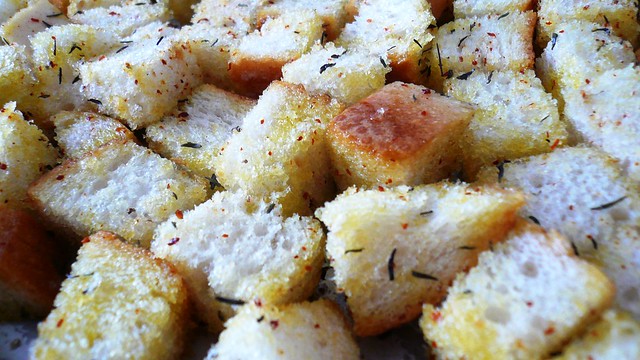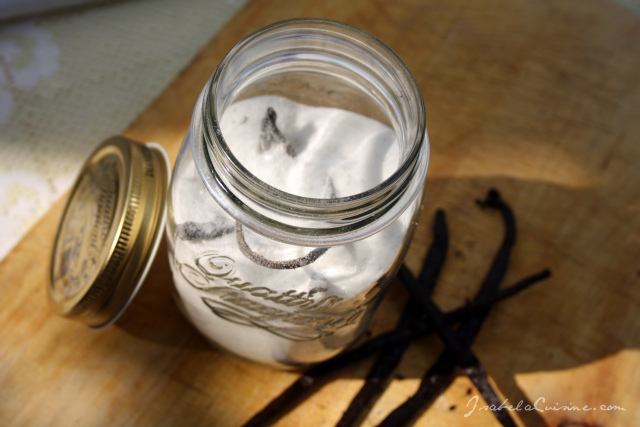10 Tips I Learned in Culinary School to Reduce Food Waste
America wastes about 40 percent of its food — the equivalent of about $115 billion dollars per year. Of the estimated 113 billion pounds of food that are thrown out every year, much of it is perfectly edible and usable. Sadly, only three percent of food in the US is composted, and as a result, food is typically the biggest ingredient in a city’s waste stream. In landfills, this waste breaks down into methane — a greenhouse gas that’s 25 times more powerful than carbon dioxide.
This spring, I fulfilled a lifelong dream and completed an amateur course at the International Culinary Center (formerly the French Culinary Institute) in New York City. One of the first things I learned from our chef instructors is that wasting food in the kitchen is wasting money, and absolutely everything and anything that can be repurposed and re-used in a kitchen will be. Luckily, the philosophies and techniques I learned about reducing food waste in a professional kitchen are easily translated to everyday cooking at home. Here are ten tricks professional chefs use to reduce food waste, lessen their environmental impact and save money:
1. Sort Food As You Prep
On the very first day of culinary school, you learn to organize your cooking station using the mise en place system — translated as “everything in its place” — so that all of your tools and ingredients are tidy, pre-measured and within arm’s reach. This helps streamline the cooking process and keeps your station clean and organized at all times. You’re also taught to sort your ingredients and cooking scraps into separate bowls as you go: one for chopped items you’ll use for cooking, one for food scraps that can be frozen or used later for sauces and stocks and one for peels that are headed to the compost bin.

Food bowls.
2. Save Your Herb Stems for Flavoring Soups and Sauces
While you’re prepping your food, it’s a good idea to reserve your herb stems to use in other recipes. Parsley stems are a key ingredient in a traditional bouquet garni — a little packet of herbs and spices wrapped up and tied in cheesecloth, the dark green ends of a leek or a coffee filter that’s added to soups and stocks to give them additional flavor. For woodier, oilier herbs, like rosemary and thyme, you can add them to rice or quinoa dishes for extra flavor. Just be sure to remove the stems before serving.
3. Use Butter Wrappers to Grease Baking Pans
Stop throwing away your butter wrappers! Instead, keep them and use them for greasing muffin tins, cookie sheets and cake pans. They’re easy to fold up and can be stored easily in a small container in the door of the fridge.
4. Make Fish and Seafood Stock from Shrimp Shells and White Fish Bones
Fish fumet is a classic French fish stock and forms the base of many traditional seafood soups and sauces. Fumet is best made with bones, heads and tails of non-oily fish like cod, haddock, sea bass and hake. Shrimp and lobster shells also work really well, too, to create a seafood stock.
First, rinse the bones and/or shells and set aside. (If you’re pressed for time, you can always freeze shells and fish bones to make stock later.) Then add a little bit of butter to the saucepan and sauté a diced onion, diced shallots, a couple of sliced leeks (white and light green parts only) and a bit of diced carrot until softened. Add the fish bones and/or shells and sauté for a minute with a splash of white wine. Pour in just enough water to barely cover the bones and veggies, a handful of black peppercorns and a bouquet garni. Bring to a boil, and then simmer for about 45 minutes, removing any scum that rises to the top with a slotted spoon. Strain stock into a clean container and allow to cool before refrigerating or freezing.
Video: Step by step recipe on how to make French Fish Fumet (Fish stock)
…Or Make Chicken Stock From Leftover Chicken Bones!
It’s also super easy to make chicken stock from any leftover chicken bones you may have (rotisserie chicken bones are great for this, too). In culinary school we learned that it is much cheaper to buy a whole chicken instead of parts. Break down the chicken by cutting out the spine and neck and cutting it apart at the joints. Reserve the neck and back, run them under cold running water and place in the freezer for making stock later (don’t forget to save the leftover bones from dinner too). When you’ve accumulated a couple pounds worth of bones, make chicken stock. It’s easy! Just combine the bones, two roughly chopped carrots, chopped leeks, chopped celery ribs, garlic cloves and one chopped onion. Add a bouquet garni, and cover with water. Bring to a boil and then simmer for about an hour, skimming off any scum that comes to the surface. Strain and cool before refrigerating or freezing.
Video: How to make fresh chicken stock
5. Save Your Bacon Grease and Render Fat From Leftover Duck Skin
The French loooove their butter and fat — and a good chef knows that they make absolutely everything taste better. Next time you fry up some bacon, pour the fat into a little jar and keep in the fridge. If you ever roast a duck, you can also reserve the raw leftover skin that’s removed from the bird before cooking and simmer it in a little bit of water to render out a whole bunch of amazing delicious fat (see video below). Both are great for frying eggs and pan-crisping vegetables to get extra flavor and nutrients (and save money on butter!).
Video: How to render duck fat
6. Make Breadcrumbs or Croutons From Old Bread
One thing we learned is that restaurants always make their own breadcrumbs and croutons from stale leftover bread. It’s really simple and easy to do at home as well. For breadcrumbs, just cut stale bread into small pieces and pulverize them in a food processor. For croutons, lightly mist the bread to soften, cut the bread into one-inch cubes, toss with olive oil, salt and herbs, and then place on a baking tray in a single layer. Bake in a 300-degree oven until golden brown, stirring occasionally, for the best-ever croutons.

Homemade Croutons by Ashe via Flickr
7. Save Your Vanilla Bean Pods
Next time a desert recipe calls for fresh vanilla beans, keep the pod, rinse it, dry it well and stick it into a small jar of sugar sealed with an airtight lid. As it sits, the vanilla will slowly infuse the sugar with flavor. Remove the pod after a few weeks, and use the vanilla-flavored sugar as you would any regular sugar: for baking, dusting over cookies and in coffee. Adding a leftover vanilla pod to alcohol like vodka and bourbon will infuse it with an amazing flavor as well.

Vanilla sugar by Dobrin Isabela via Flickr
8. First In, First Out
In culinary school, we were taught to not only use lots of plastic wrap to keep foods fresher longer, but also to label all our items so we knew exactly what it was and when it was made. Chefs do this because restaurant kitchens run using the “first in, first out,” principle, which requires that the oldest products get used first, ensuring that ingredients get used before they expire. Applying this system at home can really help reduce food waste. Once your food goes in the fridge, take care to consume the older products — or those with a fast-approaching expiration — as soon as possible.
9. Rearrange Your Fridge for Optimum Freshness
You can also rearrange your refrigerator like a professional to help extend the shelf life of your ingredients. In school we learned the higher you place an item on the shelf, the warmer it will be, so it’s best to keep super perishable items that are more likely to grow bacteria — like raw meat and seafood — on the lowest shelf. On the middle rack, store items that are less likely to spoil, like eggs, milk, cheese and deli meats. The top shelf of the fridge is a great place to keep leftovers that have already been cooked or are shelf-stable, like beverages. This also helps you remember to eat leftovers because they will be the first thing you see when you open the fridge.
10. If All Else Fails, You Can Always Compost Your Food Scraps and Leftovers
Composting instead of throwing away food waste and other organics reduces your environmental impact and transforms trash into a useful resource. Nutrient-rich compost is a cheap fertilizer free of pollutants and chemicals. For more information and tips on composting at home, check out our comprehensive composting resource page.
More Reading
The ins and outs of vegan hot dogs
April 16, 2024
7 books about onions, garlic and the wide world of alliums
March 13, 2024
Eat seasonally this winter with persimmons
January 18, 2024
Commit to sustainable habits with our Reduce Your Foodprint Challenge
December 18, 2023
9 homemade preserves to gift (or keep) this holiday season
December 12, 2023
Get creative with these food preservation methods
December 1, 2023
Meatless Monday: The first 20 years
November 1, 2023
Why 2023 is the International Year of Millets
October 5, 2023
Eat more grains — and keep it local
September 29, 2023
When it comes to sustainable spices, 'single-origin' isn’t everything
September 8, 2023
